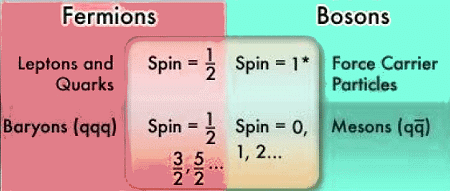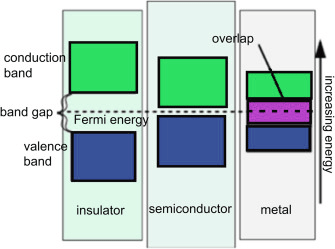Science and Technology: June 2023 UPSC Current Affairs | Science & Technology for UPSC CSE PDF Download
| Table of contents |

|
| Detection of Pre-Diabetes |

|
| AI-Driven Discovery of Abaucin: A Powerful Antibiotic |

|
| Dealing with Deepfakes |

|
| Fermi Energy in Quantum Physics |

|
| Betelgeuse Star |

|
| X-raying a Single Atom |

|
Detection of Pre-Diabetes
Why in News?
According to a study, funded by ICMR (Indian Council of Medical Research), one in five healthy individuals has the glucose metabolism of a Prediabetic.
- The researchers used Continuous Glucose Monitors (CGMs) to detect Pre-Diabetes. Continuous glucose monitoring automatically tracks blood glucose levels throughout the day and night, which can help make more informed decisions on how to balance food, physical activity, and medicines.
What are the Key Highlights of the Study?
Prevalence
- 101 million (11.4%) people in India have diabetes and 136 million (15.3%) people have prediabetes.
- There is almost no rural and urban divide when it comes to the prevalence of prediabetes.
- Prediabetes levels were found to be higher in states where the current prevalence of diabetes was low.
Conversion Rate
- Conversion to diabetes from Prediabetes is very fast in India; more than 60% of people with prediabetes can end up converting to diabetes in the next five years.
- Moreover, almost 70 % of India’s population lives in villages. So, if the prevalence of diabetes increases by even 0.5 to 1%, the absolute numbers will be huge.
What are the Recommendations?
Tracking Prediabetes
- In India, identifying individuals at risk of prediabetes has traditionally relied on the oral glucose tolerance test. However, the study suggests the existence of a stage before prediabetes, labeled impaired glucose homeostasis.
The Oral Glucose Tolerance Test (OGTT)
- The OGTT is a test that measures how the body handles glucose after a meal. It can detect abnormalities in blood sugar levels before fasting levels return to normal.
- The test helps diagnose diabetes and prediabetes.
- If the fasting value is above 126 mg/dl and the two-hour value post-fasting is above 200 mg/l in the oral glucose tolerance test, then it is defined as diabetes.
- If the fasting values are between 100-125 and two-hour values are in the range of 140-199, then the patient is classified to be in the pre-diabetic stage.
- Fasting values below 100 and two-hour values of less than 140 are labelled as normal.
What is the Importance of Early Detection?
- Early detection of diabetes is crucial, as it allows for timely intervention and reduces the risk of complications. However, the cost of CGMs poses a challenge in India, where many pre diabetics may face economic constraints.
- While CGMs can improve nutrition and sugar levels, their affordability remains a concern.
- As per the World Health Organization (WHO), more than 50% of individuals with diabetes are unaware of their condition, highlighting the need for accessible and cost-effective screening methods.
AI-Driven Discovery of Abaucin: A Powerful Antibiotic
Latest Context
- Recently, a remarkable feat in the field of medicine by using Artificial Intelligence (AI) to discover a powerful antibiotic called Abaucin capable of fighting Acinetobacter baumannii superbug was achieved by Scientists from the United States and Canada. This scientific breakthrough holds immense promise in the fight against drug-resistant bacteria.
Acinetobacter Baumannii
- As per World Health Organization (WHO), it is a very dangerous bacterium resistant to antibiotics. It may cause severe infections such as meningitis, pneumonia, and wound infections, and lead to fatalities. It is found in hospitals and can survive on surfaces for long periods making it very difficult to eradicate. It was recognised as a "red alert" human pathogen due to its remarkable capacity to develop resistance to all currently available antibiotics.
Antibiotic Resistance’s Occurrence
- As per WHO, Antibiotic resistance occurs when bacteria change its response to the use of the medicine which ultimately can cause the medical treatment ineffective. Antibiotics are medicines used to prevent and treat bacterial infections.
- Misuse and overuse of antibiotics fuel the rise of drug-resistant bacteria which poses a global health concern.
- Due to increasing anti-bacterial resistance, as WHO identifies, the lists infections like pneumonia, foodborne, and tuberculosis diseases becoming harder to treat with existing medication.
Key Facts: Superbugs are bacteria that are resistant to several types of antibiotics. Every year these bacteria cause infect more than two million people in the US and become the cause of death of approximately 23,000 as pointed out by US Centers for Disease Control and Prevention (CDC)
Abaucin
- It causes disruption in the normal functioning of a protein called CCR2.
- It causes the disruption in lipoprotein trafficking in A. baumannii.
- According to experts, abaucin can prevent lipoprotein produced inside the bacteria from moving to the outer membrane.
- By nature, it is “Species-selective”. It only disrupts the growth of A. baumannii, not others such as Gram-negative bacteria.
Mechanism of Action: By causing disruption in the normal functioning of the CCR2 protein in bacteria, it hinders the movement of certain molecules inside the bacteria, preventing them from reaching the outer membrane which results in the inhibition of the growth of Acinetobacter baumannii reducing its ability to cause infections.
Dealing with Deepfakes
Why in News?
Recently, various news sources have focused on the growing concern over deepfakes, which are fabricated media created using deep learning technology.
- While deepfakes have the potential to distort reality and manipulate public perception, they also hold promise in various fields. The challenge lies in responsibly wielding this technology and addressing its impact on society.
What is Deepfake Technolgy?
About
- Deepfake technology is a method for manipulating videos, images, and audio utilizing powerful computers and deep learning. Deep learning is a part of Deep synthesis.
- Deep synthesis is defined as the use of technologies, including deep learning and augmented reality, to generate text, images, audio and video to create virtual scenes.
- It is used to generate fake news and commit financial fraud among other wrongdoings.
- It overlays a digital composite over an already-existing video, picture, or audio; cybercriminals use Artificial Intelligence technology.
- Deepfakes surpass traditional photo editing techniques by leveraging machine learning algorithms.
- Deepfakes have been used to create manipulated content, such as fake videos of political figures and false disaster images.
Redeeming Applications of Deep Learning
- Deep learning technology has enabled positive advancements, such as restoring lost voices and recreating historical figures.
- The ALS Association's voice cloning initiative and recreations of artists and celebrities showcase the potential benefits of deep learning.
- Deep learning techniques have been applied in comedy, cinema, music, and gaming to enhance artistic expression.
Unsettling Consequences and Ethical Concerns
- Deepfakes have been employed for malicious purposes, including revenge porn and hacking facial recognition systems.
- They undermine trust in the media and blur the lines between fact and fiction.
- Misinformation propagated by deepfakes can be mistaken as true, leading to potential social unrest.
What is India’s Stand on Dealing with Deepfakes?
- India does not have specific laws or regulations that ban or regulate the use of deepfake technology.
- Existing laws such as Sections 67 and 67A of the Information Technology Act (2000) have provisions that may be applied to certain aspects of deepfakes, such as defamation and publishing explicit material.
- Section 500 of the Indian Penal Code (1860) provides punishment for defamation.
- The Personal Data Protection Bill (2022), if passed, could provide some protection against the misuse of personal data, but it does not explicitly address deepfakes.
- India needs to develop a comprehensive legal framework specifically targeting deepfakes, considering the potential implications for privacy, social stability, national security, and democracy.
What are Other Countries doing to Combat Deepfakes?
European Union
- In 2022, the European Union has updated Code of Practice on Disinformation that was introduced in 2018 to stop the spread of disinformation through deepfakes.
United States
- The U.S. introduced the bipartisan Deepfake Task Force Act to assist the Department of Homeland Security (DHS) to counter deepfake technology.
China
- China introduces comprehensive regulation on deep synthesis, effective from January 2023. Aimed at curbing disinformation, the regulation requires clear labeling and traceability of deep synthesis content. Consent from individuals and adherence to laws and public morals are mandated. Service providers must establish review mechanisms and cooperate with authorities.
Way Forward
- AI-Powered Social Media Fact-Checking: Engage social media platforms to invest in AI-powered algorithms and tools that can automatically detect, and flag potentially manipulated or deepfake content.
- Collaborate with fact-checking organizations and utilize the power of public participation to quickly address and act against the spreading of false information through deepfakes.
- Blockchain-based Deepfake Verification: Use blockchain technology to create an unchangeable record of who created a piece of digital media and ensure transparency in verifying its authenticity.
- This decentralized approach allows individuals to trace the origin and modification history of media, discouraging the creation and dissemination of malicious deepfakes.
- Deepfake Impact Mitigation Policy: Set up a fund to help individuals and organizations affected by deepfakes.
- Deepfake Accountability Act (DAA): DAA can be introduced aimed at addressing the challenges posed by deepfakes and ensuring accountability in their creation and distribution and controlling.
- Punishments and Public Awareness Campaigns: Laws should punish bad-faith actors and protect individuals from the manipulation of their digital representations.
- Public awareness and literacy in scientific and digital domains are crucial to combat the spread of deepfakes.
Fermi Energy in Quantum Physics
Why in news?
- More research in quantum physics in recent times have shown that the fermi energy are significant and produce high energy.
What is fermi energy?
- Fermi energy is defined as the highest occupied energy level of a material at absolute zero temperature (-273º C or 0K).
- In other words, all electrons in a body occupy energy states at or below that body's Fermi energy at 0K.
- It is an energy difference of the kinetic energy of a system containing fermions.
- Fermi energy is constant for each solid.
What are fermions?
- Fermion is any member of a group of subatomic particles having odd half-integral angular momentum (spin 1/2, 3/2).
- Fermions mainly include quarks and leptons along with electrons, protons, and neutrons.
- Fermions obey Fermi-Dirac statistics, which means that when one swaps two fermions, the wave function of the system changes sign.
- Fermions obey the Pauli exclusion principle - no two fermions can exist in the same quantum state at the same time.

What is fermi level?
- Fermi level is the measure of the energy of the least tightly held electrons within a solid.
- It is the surface of that sea at absolute zero where no electrons will have enough energy to rise above the surface.
- The fermi energy levels enable us to
- Calculate the density of electrons
- Number of holes in the material
- Relative proportion of holes and density with respect to temperature

What are the applications of fermi energy?
Fermi energy is
- Applied to Determine the electrical and thermal characteristics of solids
- Important in nuclear physics to understand the stability of white dwarfs
- Used in semiconductors and insulators
- Used to describe insulators, metals, and semiconductors
Betelgeuse Star

Why in News?
The bright red star Betelgeuse, known as 'Thiruvathirai' or 'Ardra' in Indian astronomy, captivates observers with its prominent position in the constellation Orion.
- Recent research conducted by Japanese and Swiss researchers has shed light on the star's pulsation patterns.
What is Betelgeuse's Pulsation?
About Betelguese
- Betelgeuse is a red supergiant star that is nearing the end of its life. It is the second-brightest star in the constellation of Orion, after Rigel.
- Scientists noticed that Betelgeuse was mysteriously dimming in late 2019 following a traumatic outburst caused by the star blowing off a large portion of its visible surface.
- Betelgeuse varies in brightness because of two main factors: changes in its surface temperature and changes in its size.
- As a red supergiant, Betelgeuse has a very unstable outer layer that is prone to convection and pulsation.
The Pulsating Mechanism
- The pulsation of Betelgeuse refers to the periodic contraction and expansion of the star.
- Researchers have compared the observed pulsation of Betelgeuse to theoretical estimates, indicating that the star is in its late carbon-burning stage.
- Pulsation periods provide valuable insights into the star's radius, luminosity, and mass, affirming its current phase of core carbon-burning.
- Similar to a pot's lid lifting to release steam, red giant stars expand and contract due to heating and cooling of hydrogen in their outermost layers.
- The star's outermost envelope contains cooler neutral hydrogen, which absorbs heat from the interior, causing the star to expand.
- As the temperature rises, hydrogen becomes ionised and can absorb more heat, leading to a forceful expansion and ejection of the outermost shell.
- The cyclic nature of this process results in periodic dimming and brightening of the star, observable from a distance.
Stages of Evolution
- Stars like Betelgeuse fuse hydrogen into helium during their initial stages, which helps maintain a balance between gravity and energy release.
- Massive stars like Betelgeuse run out of hydrogen fuel in a few crore years, when they switch to using helium to make carbon. Helium runs out in about 10 lakh years.
- As each stage progresses, the burning of elements becomes faster, with carbon burning in a few hundred years and silicon burning in about a day.
- Afterwards red giants briskly consume one by one the elements of the periodic table, until finally their core brims with iron.
- Once the core is rich in iron, the temperature and pressure within the star drop. With nothing to stop it, gravity compresses the core and turns it into a neutron star or a black hole.
- Betelgeuse's late-carbon stage signifies the terminal phase before the star's imminent collapse.
X-raying a Single Atom
Why in News?
By detecting an element using X-ray imaging of a single atom, scientists have accomplished a stunning milestone.
- Wilhelm Conrad Rontgen made the discovery of X-rays in 1895, and they now play a crucial role in a number of industries, including security and health.
- Previously, an attogram (which is approximately 10,000 atoms or more) was the smallest amount of sample that could be X-rayed. One atom can now be X-rayed, which has long been a goal of scientists' research.
New technique for X-raying a single atom
Technique
- For the first time, researchers have utilised a technique known as synchrotron X-ray scanning tunnelling microscopy (SX-STM) to detect the X-ray signature of a single atom.
- SX-STM is a technique that combines synchrotron X-rays, which are high-energy X-rays created when electrons are accelerated around a circular track, with scanning tunnelling microscopy, which interacts with a sample's electrons at extremely close ranges using a sharp metal tip.
- The sample is excited by synchrotron X-rays, and the metal tip gathers the photoelectrons the excited atom emits to identify and determine its chemical state.
Materials Science
- The study of solid materials' properties and how their composition and structure affect those properties is known as materials science.
Significance for Material Science
- It sheds light on the atomic-scale interactions and characteristics of materials.
- Allows for a detailed knowledge of molecular behaviours and structures.
- Aids in the creation of innovative materials and devices.
- Increases understanding of quantum events, biomolecular interactions, and catalytic activity.
What is X-ray?
- It is an electromagnetic radiation having a shorter wavelength, a higher frequency, and a higher energy than visible light.
- It may provide images of interior structure and can pass through most objects, including the human body.
- Produced by excitation of atoms or acceleration or deceleration of charged particles.
- Widely used in applications such as science, medicine, industry, and security.
- Used to scan luggage, identify materials, diagnose diseases, find bone fractures etc.
|
90 videos|488 docs|209 tests
|















